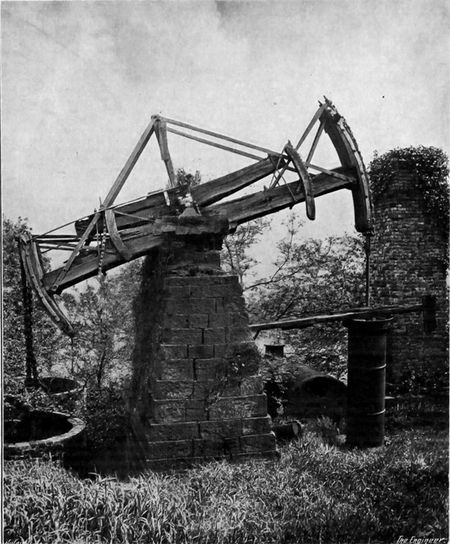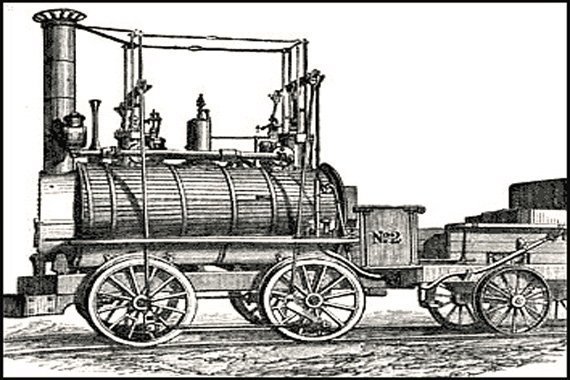Sound the Steam Whistles (Impacts of the Steam Engine)
Week 6 of our Survey Design class covered the years 1750-1850, as well as in-depth coverage of printmaking in Japan. In all honesty, it was a nice break from the origins of design and typography in Europe.
There was also the mention of steam power during the lecture. Having been assigned as a designer this week- I decided to cover this topic. As such, allow me to explain to you the impacts of the steam engine during the Industrial Revolution:

The invention of a steam engine through the contributions of Thomas Newcomen and James Watt signified a major turning point for life in Britain.
Thomas Newcomen invented the first known model of the steam engine in 1712, intending to improve the exploitation of coal. The resource was easier to find because of the Newcomen’s model, with the mining industry having the newfound ability to dig deeper pits to reach previously untouched coal reserves.
This method is the discharge of water from mines, now more efficient compared to slower processes existing before the steam engine. Unfortunately, this did not improve the way coal was extracted, it only reduced the time required to access the coal.
This revelation did influence the location of industrial zones, with new factories established closer to coalfields which gave access to cheaper sources of fuel.
Factories too were affected by the introduction of the steam engine. However, these engines were rather inefficient since steam would tend to escape- otherwise, more steam was being consumed to produce steam power. Cue the arrival of James Watt, who improved Newcomen’s model of the steam engine.

Before the implementation of the steam engines, early factories had to be located on hills which contained streams of fast-running water that powered these factories. With the steam engine, factories need no longer the hillsides but a single, large steam engine reworked by Mr. Watts.
This engine was used to drive a shaft and power belt which primarily delivered power to all machines in the factory, thus reducing the required amount of manual labour.
The increased productivity also attracted bundles of settlers seeking to live in industrial zones, forced to live closer to work as many towns transformed into cities.
The use of iron was significantly improved, with the steam engine- developments in utilizing iron skyrocketed, with iron-made factories and the more accurate manufacturing of existing machines and steam engines.
The steam engine also reduced the cost of transporting goods, improving transport via land and sea, more specifically through watercraft and railroads.
A man named Robert Fulton, utilized the steam engine to invent the first steamboat, allowing more goods to be shipped through canals and waterways in 1807.

George Stephenson invented the first steam-powered train in 1814, which transported human populations and of course goods, through long-distance spans. This opened a system of importing and exporting goods as well as raw materials.
When all these breakthroughs are considered in thought, it was no doubt that the steam engine was a major game-changer during its time.
WORKS CITED
- “Steam Engine.” Bloomsbury Guide to Human Thought, edited by Kenneth McLeish, Bloomsbury, 1st edition, 1993. Credo Reference, https://search-credoreference-com.ezproxy.capilanou.ca/content/entry/bght/steam_engine/0. Accessed 16 Oct. 2019.
- “Industrial Revolution.” The Hutchinson Unabridged Encyclopedia with Atlas and Weather Guide, edited by Helicon, 2018. Credo Reference, https://search-credoreference-com.ezproxy.capilanou.ca/content/entry/heliconhe/industrial_revolution/0. Accessed 16 Oct. 2019.
- History Crunch Writers. “Invention of the Steam Engine.” History Crunch – History Articles, Summaries, Biographies, Resources and More, History Crunch, 22 Jan. 2016, www.historycrunch.com/invention-of-the-steam-engine.html#/.
IMAGES OBTAINED FROM
- https://ethw.org/Thomas_Newcomen_and_the_Steam_Engine
- https://www.locallocalhistory.co.uk/brit-land/power/page06.htm
- https://diyhomeschooler.com/the-steam-locomotive-a-mini-unit/